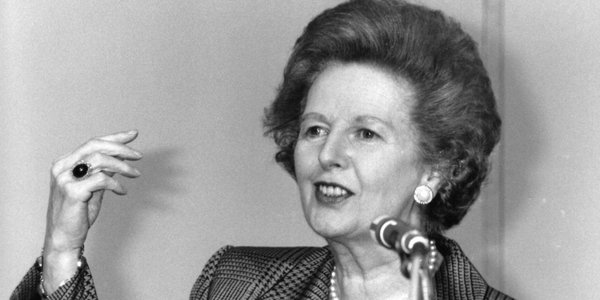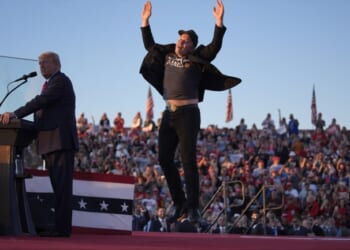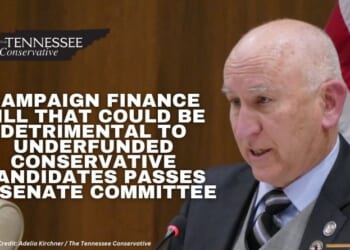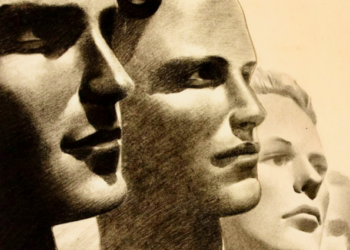It is 50 years this week since Margaret Thatcher was elected leader of the Conservative Party, and to mark the anniversary we are exposing the big lies still told about her. The first that Paul T Horgan identified was that she destroyed the post-war consensus, and you can read that article here. The second was the accusation that Thatcher’s policies devastated communities, and the article is here. In today’s final part Paul exposes a third – and more recent – ‘big lie’: that Margaret Thatcher was divisive. This article was first published on July 19, 2019.
THE third big lie about Margaret Thatcher’s term in office is that she was a ‘divisive’ figure. This lie really started to be propagated in 2013 when it became the main narrative of the BBC and elsewhere after the Iron Lady died. What these media outlets probably meant was not ‘divisive’ but ‘polarising’. Margaret Thatcher presented a stark choice between consensus socialism and reformist capitalism. The voters chose the latter in decisive numbers in four General Elections. Despite unemployment, inflation and the miners’ strike, Britain still kept voting Conservative, keeping the party in power for a record-breaking 18 years.
If Margaret Thatcher had been divisive, the response of her opponents would surely have been to form a ‘popular front’, where differences amongst themselves would be forgotten in an anti-Conservative electoral alliance. In fact the precise reverse happened.
The most divisive figure in 1980s British politics was Tony Benn. It was his hard left politics and his supporters’ advocacy for it that led to unprecedented division in the Labour Party. Labour moderates left the party to form the SDP, which was a form of ‘continuity Callaghan’, while Michael Foot took Labour to the left, abetted by Benn. Margaret Thatcher cannot be held responsible for the fact that political opposition to her was split, but she was able to take advantage of it by enjoying a landslide electoral victory in 1983. Naysayers now try to say that this victory was due to Britain’s victory in the Falklands, even insinuating that the conflict was planned as a political diversion. But they cannot explain why, when the economy was suffering while the country worked through the long tail of socialist economic destruction and the consequences of the Second Oil Shock, the Labour party decided to fission. This was surely the time to ‘unite and fight’, as the slogan goes. A mini-popular front with an alliance of the SDP and Liberals failed to make an electoral breakthrough. After a further defeat in 1987 this alliance had a simultaneous fission and fusion.
The fact is that by the late 1970s British voters were sick of socialist policies which did not work and had made the UK the ‘sick man of Europe’. They were also disgusted at the trades unions’ abuse of their legal immunities to prevent wealth creation and promote political violence. Two successive Labour governments in 1974, the first a minority administration, the second with a majority of just three, had brought in a policy of surrender to thuggish unions, which emboldened them to hold more strikes to get more money without productivity increases or efficiencies. New technology that could improve workplaces was blacked. There were also strong forces trying to transform this country into a socialist one-party republic either through a union-backed uprising or through legislation. The division in Labour’s left about Britain’s future was whether the irreversible road to socialism was to be Parliamentary or industrial. The only UK political party standing up to socialism in 1979 was Margaret Thatcher’s Conservatives and that stance was rewarded by electoral victory. To stand up to socialism was not divisive then or now.
The road to socialism was decisively rejected in a free choice by the voters in 1983. They had a choice between Labour’s revolutionary or the SDP’s gradualist socialism, or the Conservatives’ reversal of socialism. The voters chose reversal. They did so again with a landslide in 1987, and kept the faith in 1992. It is telling that under Blair or Brown in 13 years of Labour rule, none of the main economic reforms of Thatcherism was reversed. If Margaret Thatcher had been such a divisive figure as her detractors misrepresent, reversals of her policies would have formed part of Labour’s four manifestos from 1997 onwards. It is noteworthy that neither of the subsequent two manifestos, which promised reversals, have been successful in bringing Labour to power.
Responsibility for divisiveness in the 1970s and 1980s lay with socialism, as trades unionists tried to use thuggery to usurp elected governments, causing the public to turn against them and their political representatives in vote after vote until Labour learned their lesson in 1997. The elevation of Margaret Thatcher was a consequence of that divisiveness, not the cause. Anyone blaming Mrs Thatcher for divisiveness represents a sore loser taking a pathetic kind of revenge years later by wilfully distorting the truth to those too young to remember themselves.










